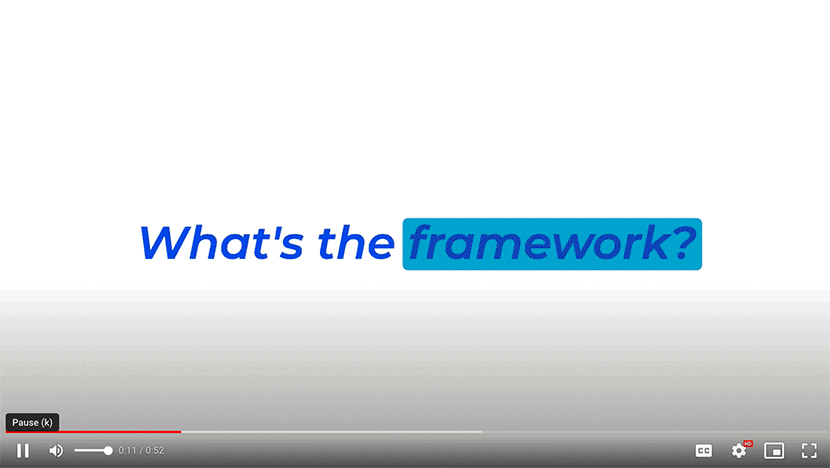An online course can be an extraordinary way to make money. However, it can also fall flat. Whether your online course is a success or not largely depends on the way you go about creating it and whether or not you’re meeting consumer expectations.
In this article, we are going to elaborate on how to create an online course properly and earn that extra income.
Let’s get started with why you should do it in the first place.
Why Make an Online Course?
You might be wondering if the online course trend is even worth hopping on; especially if you’re already operating another business and focusing on its success.
Well, it is.
This is because an online course is essentially just sharing the knowledge you’ve accumulated over the years and presenting it in a way others can learn from. Essentially, you’re monetizing the very skills and experiences that you had to learn to find the success you already have, and you’re maximizing how much those experiences can earn you in the long term.
Steps to Creating a Stellar Online Course

Making an online course isn’t extremely difficult. You already know the majority of what you need just by having experience in the topic you’re talking about. The trick is presenting it in a way that generates attention and purchases. So, that’s largely what this will focus on.
1: Choose Your Topic
This shouldn’t be a hard thing to do. You should have a lot of professional experience in whatever it is you’re doing a course on, and you should be well acquainted with that topic. So, the number of potential topics should be relatively low.
If you have multiple skills you can talk about, it’s up to you to determine whether you’ll make multiple courses that will cover each one independently or if you want to make one all-encompassing course. Figure out which option will provide you with the most potential for success.
However, any topic you choose should be something highly specific. For example, let’s say you’ve been a computer repair specialist for decades, and you want to create a course to bring in more income. It might be more effective to sell a course on building desktop computers, developing a business in computer repairs, or similar niche topics.
Niche topics are much easier to find audiences for, and they tend to be easier to develop courses for. If you covered every skill you have in a general “Computer Sciences” course, your target audience would be too broad.
2: Determine Your Audience
Once you know what you want to revolve your course around, you need to understand who is likely to need that course. This will make marketing and even designing the course a lot easier.
There are numerous online tools and services you can use to determine an effective target audience, but make sure you put in the work to research so you have the information you need to successfully attract that audience.
Know what types of advertisements attract them, the type of content they like, the skill level you need to cater to, and anything else you can get a hold of.
3: Leverage Your Existing Audience
Whether you have a successful blog that supports your business, or you can leverage your own customers, it’s important that you pull in what you already have to get your initial sales up.
Going with the computer repair specialist example from above, let’s assume you get a lot of customers who know a lot about using their rigs, but they ask for a lot of help with basic maintenance and repairs. You can leverage those customers by linking them to your course and explaining how the course can be of value to them.
Obviously, who you will push toward your course and how you do it will change dramatically depending on your business, but that’s just one example.

4: Focus on the Title
The title of your course doesn’t seem important at first. After all, it’s just a description of the content, right? Wrong. It’s the first thing your student sees when they consider purchasing the course, and it needs to be exciting enough to hook them without being unprofessional.
Spend time crafting a title, run it by your existing audience, consult a marketing firm, and generally do what you can to make it as effective as possible.
5: Pre-Sell the Course
Before you even have a course to sell, you need to start marketing it. Generating buzz before you have the course ready can help prevent it from being dead on arrival or suffering from lackluster initial sales.
You can pre-sell the course simply by word-of-mouth marketing, or you can go as far as making announcements and engaging with your potential audience on social media.
6: Use Streamlined Tools
You never want to spend more time producing a product than what you’ll get out of it. The trick is to take the fastest route while ensuring the highest quality, so you get more money for your time.
You can build your course from scratch, but there’s really no need to. Doing everything listed here and handling the technical aspect of it can be a daunting task. That’s why we recommend leveraging MK-Way’s e-course building tools. You handle the basics like recording, and the MK-Way toolset makes developing your recordings into a professional-quality course an easy and streamlined task.
7: Ensure Quality

You’re going to have to record yourself and edit video files to create your course. The tools we talked about above help you organize those recordings and turn them into a proper course, but you still have to learn to use a camera.
Next to marketing, this is the most important part of the process. Make sure you’re speaking in a way that is energetic, professional, and engaging, and make sure that every scene is shot to a professional standard. People are paying for this. Something that looks like 2007 YouTube simply won’t work.
You might even consider hiring an editor to handle post-production, recommend reshoots, and make the work as professional as possible.
8: Branding
As you’re developing your course, and as you engage with your audience throughout the pre-course and post-course process, you should ensure that you’re focused on professional branding. Branding makes you stand out, and it gives your course a unique identity. Ideally, you’ll have decided on your approach before you started and stick with it throughout.
If you need help with developing the brand, MK Way is the #1 creative branding agency in Toronto, ready to work its magic to get your course galactically recognized!
9: Sell the Course
Finally, after your course has launched, you’ve leveraged pre-sell strategies in your favor, and you’re more or less done with it, you’re not ready to call it quits. You need to focus on selling the course.
You can do this in online communities dedicated to the topics you cover, via Google ads or Social Media, and with the help of a professional digital marketing service.
At this point, you’re just focused on marketing while the course takes care of the rest. Congratulations!



